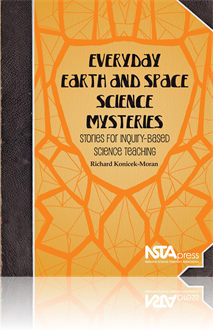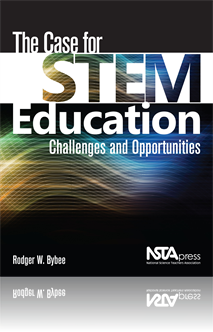All Book Chapters
Book Chapter
The author’s research and that of others show that children have a difficult time understanding the recycling of organic matter in an ecosystem. The story in this chapter aims to have students speculate about what happens to organic material over t...
Book Chapter
How Is STEM Education Reform Different From Other Education Reforms?
“How is this education reform different from any other reform?” In the context of this chapter, the answer to this question is what differentiates STEM reform from other reforms, such as the Sputnik era. This chapter has three parts. The first pa...
Book Chapter
Let’s Diagnose Them, Lab 3:<i>Blood Smears</i>
In the student version of this activity, your students are beginning to think that some of their patients’ symptoms may be caused by either a pathogen or a genetic disorder. The students will analyze the red blood cells. This sample chapter also in...
Book Chapter
Teacher Guide for Let’s Diagnose Them, Lab 3: Blood Smears
In the teacher version of this activity, your students are beginning to think that some of their patients’ symptoms may be caused by either a pathogen or a genetic disorder. The students will analyze the red blood cells. This sample chapter also in...
Book Chapter
Introduction To The <i>NGSS</i>
The Next Generation Science Standards (NGSS) consists of a series of standards for grades kindergarten through 12. In rather straightforward terms, the NGSS has only two specific purposes beyond its broad vision for science education, namely (1) to ...
Book Chapter
The best preparation for the NGSS is a thorough understanding of the Framework. This chapter provides a brief overview of portions of the Framework, including Part I, Part II, and Part III. A brief history of the Framework's development is also prov...
Book Chapter
The new standards promote a vision that the instruction and the learning your students experience should change significantly. An early piece of front matter in the Next Generation Science Standards (NGSS) that lists the conceptual shifts called for ...
Book Chapter
Moving From the <i>NGSS</i> to Instruction
This chapter outlines a dynamic, active process for understanding how each component of a standard interacts with the other components by developing an instructional sequence starting with one or possibly two performance expectations. It is a roadmap...
Book Chapter
A Guide for Leading a Study Group on the Total Curriculum
The procedure outlined in this chapter is the next step in understanding the full array of what is in the Next Generation Science Standards (NGSS) and will prepare your team for the more comprehensive step of examining what is in the entire document,...
Book Chapter
The vision of the Framework and the Next Generation Science Standards will be realized only if significant changes in instruction, instructional materials, assessments, curriculum, and professional development are implemented at the state and local l...
Book Chapter
Earning Your White Coats:<i> Medical School Research</i>
In order to graduate medical school, all students must complete the research portion of this project. All medical students are required to investigate, as thoroughly as possible, the causes of, symptoms of, and potential treatments for four health c...
Book Chapter
What's Wrong With Me, Doc? <i>Analyzing Medical Records</i>
This chapter focuses on a residency program at Vanguard Hospital. The students are asked to analyze four patients’ medical records containing their symptoms, lifestyle habits, and family medical histories. With respect to privacy, these records are...
Book Chapter
Let's Diagnose Them, Lab 1: <i>Urinalysis</i>
In medical school, students learn about the excretory system and its urinary track. A urinalysis can determine the state of one’s health by examining physical and chemical properties of urine. In this chapter, four patients have submitted urine sam...
Book Chapter
Let's Diagnose Them, Lab 2:<i> Digestive By-Products and Body Mass Index Analysis</i>
In this chapter, two of the four patients are experiencing digestive issues. A team of doctors will run tests on the digestive by-products of these two patients, while the students will be expected to formulate an even deeper hypothesis about the con...
Book Chapter
Let's Diagnose Them, Lab 4: <i>HIV Test</i>
In this chapter, based on blood samples recently analyzed, one of the four patients has a very low white blood cell (WBC) count. This is alarming since it might indicate the patient is suffering from a viral infection. Since all of the patients reque...






